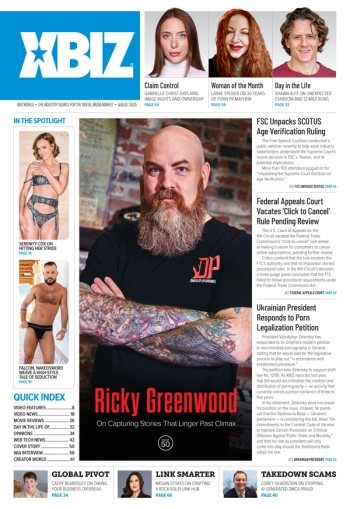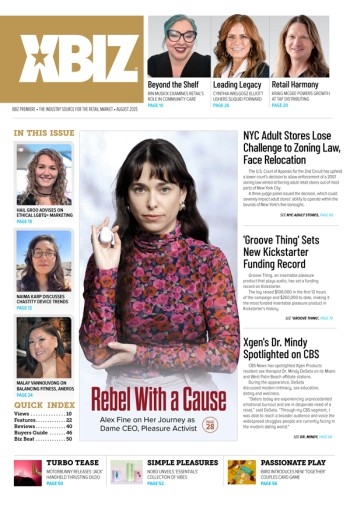Well finally we are going to get down to the nitty gritty of building a free site. If you remember in my last article I discussed building the hub page for the site. The free sites will all be linked to the Hub page to tie everything together. I am going to construct a network of simple free sites, each exploiting a particular niche. Here's how:
Getting Started
Alright before I begin, I need to select a sponsor to promote, and a site name. For the sake of demonstration, I am going to develop a free site using SexyRedheads as my sponsor site, and call the site RedAmber. It's good to focus the site on a particluar niche category, so you can really concentrate the advertising effort. I've also selected about 20 images of a young redhead model to use for the gallery pages. The images I am using are very soft core, and I belive, very tempting. The idea is to tease the surfer, and get him/her horny enough to want to pay for the hardcore stuff.
If you can't afford to purchase content, many of the sponsor programs will give it to you for free, however, I've found that you do much better not using the sponsor content. It tends to be over used, and when a surfer gets to your site, they feel like it's the same old crap they've seen a million times already. Also I've created a Full Page Ad, and grabbed some banners from the sponsor. And I've created a folder under my domain's /free folder called /free/redamber. This is where I will place all the files for my free site.
Also I should comment on the creation of the thumbnail galleries. I use a program called Thumbnailer by Smaller Animals. It is a great little program that lets me create sites very quickly by modifying templates. There are also several other great thumbnailing programs available such as ThumbsPlus and you can even do it using Adobe Photoshop. No matter what you use, I would suggest investing in one of these applications, as they will save you hundreds of man hours.
The Design
There are two basic types of free sites. The first is just a simple HTML page with a collection of thumbnails and a link to a sponsor. A more common type is a collection of pages with a warning page, index page and thumbnail page. This is the method I use.
When approaching the design of the free site there are some descisions that need to be made. We need to plan a navigation strategy and this can be handled in 2 different ways. The most basic is a string of linked pages like this (I'll discuss the actual pages later):

With this approach you lead the surfer through your site page by page, forcing them to see what you want. You can insert full page ads between any of the pages, and you can pop exit consoles off of every page if you like. The downside is that it isn't very flexible, and navigation for the surfer is not very good.
The other approach is more of a tree design:

You start with the warning page, and take them to an index page where there are links to your various thumbnail gallery pages. You can still insert full page ads along the way, and the surfer has more control over the path they choose.
Both methods work well, and I wouldn't recommend one over the other, it is really up to you which way you want to go with it. I'm going to use the tree design, mainly because I haven't done one in a while. I've include a Full Page Ad between the Warning and Index pages:

The Pages
I want to take a minute to discuss each page in the site. First we have a warning page. Take a minute to look at the page. This page is important because it shows good faith legally that we are trying to prevent minors from accessing the site. This page has a very clear warning text as well as links to IRCA and ASACP. It is always in your best intrest to place some child protection links on your warning page. You will also notice that there is a very tame banner to my sponsor on this page as well. There is a big Enter link in the middle of the page to direct the surfer into the site.
A full page ad after your warning page is a great tool.
Next up is the FPA (or Full Page Ad). A full page ad after your warning page is a great tool. For the novice surfer, they will think that this is the site. The links are somewhat misleading, as they lead the surfer to think they are going into my site when in fact they will be going to my sponsor site. Of course I have placed a small link at the very bottom of the page linking into the real site.
Next is the index or home page. This is where I will do most of the advertising for the sponsor site. The index page is pretty much a free for all, you can put anything you like on here. So load it up with exit and entrance consoles, and any other advertising tricks you can think of. You will notice I've added a bunch of ads throughout the page, also I've place a table on the bottom to other sponsor sites that are not related to this particular niche. This is called a money table or money bar,and these can be a very effective way of offering surfers another option to the niche you're promoting.
Last we have the gallery pages. I've left these pages somewhat bland. There is a banner across the top going to my sponsor. Then we have the actual thumbnail images, followed by some promotional text and another link to the sponor. And I finish up with another money box.
You might have noticed that all of the thumbnail pages open up to another HTML page which contains the full size image. Many TGP's and link lists will not allow you to open your thumbnails onto HTML pages, but I'll show you how to get around that later. For now you should realize that every oportunity to offer an advertisment should be used. Open your thumbnails to HTML pages, and make the most of the extra advertising space!
Tying It All Together
Remember in my previous article I discussed the HUB page? Well, it's time to put it to good use. I've created another FPA called an entrance page. This page will be placed between the HUB and the warning page of the new free site. I've created a link at the bottom of the HUB page to this entrance page. the entrance page will then link to the warning page of the free site. The warning page in turn links to another FPA, which links to the main index page of the site. The main index page links to the gallery pages and all the pages have an exit console back to the HUB page!
Whew! We covered plenty of ground today. Hopefully you've learned a little about setting up a free site. In my next article I'll discuss enhancing the site for TGP and LinkList submission! In the meantime, visit my resources page that lists the links I have in this article. ~ Mark






